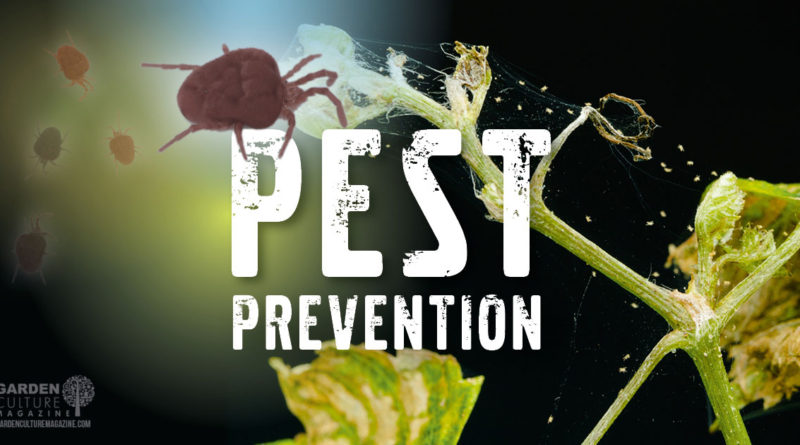Pest Prevention: The Itsy Bitsy Spider Mite
A challenge that comes with growing plants is deterring garden pests, and the list of potential insect diners wishing to feast on the fruits of your labor is a long one. One of the most destructive problems in the garden is the spider mite.
What are Spider Mites?
Spider mites belong to the arachnid family and look like tiny spiders. They thrive in hot, dry environments, and especially where there are no predators to challenge them. Spider mites are oval-shaped and only about 0.4mm long; they come in colors of red, brown, black, yellow, or green, depending on the species.
Red spider mites, glasshouse red spider mites, and carmine spider mites are especially concerning because they are sap feeders, sucking juices from plant leaves. Other spider mite species feed on decayed organic matter and small insects rather than plants.
Lifecycle and Reproduction
In a warm and dry climate, spider mates breed at an alarming rate. They can be catastrophic in an indoor grow room, destroying crops in next to no time.
When temperatures reach above 30°C (86°F), baby spider mites are born in as little as three and a half days. Females can lay 200 eggs in their lifetime. In just 15 days, new mites reach adulthood and then lay eggs of their own. Spider mites hatch at a ratio of 3:1 female to male, so it is easy to see how an infestation can quickly take hold before the grower has even noticed.
Signs of Infestation
Tiny brown spots and yellowing leaves are the first indications that spider mites are present. The mites appear as minuscule colored dots on the underside of leaves. They use spider webs to travel between leaves and branches.
How Plants are Affected
Spider mites puncture holes in the leaf and suck the sap out, causing it to turn yellow. The entire plant becomes very weak, and because mites reproduce so quickly, it won’t recover from the relentless attack and will eventually die. Spider mites are super-spreaders when it comes to transmitting disease, as they travel from one plant to another, which poses another threat to crops.
Prevention
Spider mites cannot fly. They arrive via other infested plants or hitch a ride to the growing environment on a gardener or visitor. They can also get into greenhouses or grow rooms through ventilation systems.

Use fine dust filters in grow room ventilation systems to prevent mites from entering the room. Always change any clothes that have been in contact with other plants or gardens before entering the growing environment. Because spider mites love hot and dry climates, keeping the humidity up can help deter them as well.
Neem oil and other horticultural oils are spider mite deterrents. The oil creates a barrier on the leaf, and the mites will struggle to penetrate the surface and starve. The oil also coats the mite, softening their shell, and hopefully, killing them off.
Keeping all plants covered in oil is not realistic. The best line of defense is to check plant leaves, especially the undersides, regularly for the abovementioned signs of an infestation. The mites are so small that using a magnifying glass is a good idea.
Curing A Spider Mite Infestation
The key to getting rid of an infestation is to act fast! If caught early enough, neem oil will help. If the infestation is severe, however, then the most effective cure is a non-systemic insecticide that kills mites on contact. Dousing the plant with water for a few days after will reduce any insecticide residue remaining on the plant.
If growing organically, cinnamon clove tea might do the trick. Mix an ounce each of powdered cinnamon and cloves into a gallon of cooled, boiled water. Spray regularly onto the plant. Releasing predator mites into the grow room may also help eradicate the pests. Unfortunately, the aggressive nature of spider mite infestations means organic methods tend to have lower success rates.
Prevention is the ultimate cure when it comes to spider mites, or any pests, for that matter. Taking the time to check plants thoroughly and regularly may seem daunting, but it is a chore worth doing versus the hassle of dealing with an infestation.
Rich Hamilton
An industry veteran with over 20 years experience in a variety of roles, Rich is currently a business development manager for a large UK hydroponics distributor. The author of The Growers Guide series, Rich also writes on all aspects of indoor gardening, as well as being an independent industry consultant working closely with hydroponic businesses worldwide.
Latest posts by Rich Hamilton (see all)




